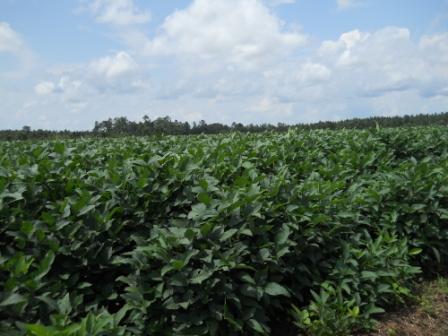 With record high fertilizer prices, a legume crop like soybeans look more appealing to crop producers. Soybeans accept a soil pH range of 5.8 to 6.5. Soybeans, when properly inoculated, require no nitrogen fertilizer. When soil levels of phosphorus and potassium are medium to high, no fertilization is required.
With record high fertilizer prices, a legume crop like soybeans look more appealing to crop producers. Soybeans accept a soil pH range of 5.8 to 6.5. Soybeans, when properly inoculated, require no nitrogen fertilizer. When soil levels of phosphorus and potassium are medium to high, no fertilization is required.
For non-irrigated fields, soybeans in maturity groups V and VI planted in May or June on 36” rows yield well. For irrigated fields, you have more flexibility with planting date, maturity group and row spacing. Maturity group IV soybeans can be planted after corn harvest on narrow rows under irrigation and yield well.
Other inputs are minimal for soybeans as well. Typically, we recommend an application of boron at 0.25 to 0.5 lb per acre along with an insecticide for caterpillar control at pod fill stage. It is also good practice to apply a fungicide for prevention of Asian Soybean Rust and Frogeye Leaf Spot with the boron and insecticide application.
Weed control options have expanded with the release of herbicide-resistant varieties. With use of this technology and other pre and post emergent herbicides, weeds can be managed effectively in soybean fields. Weed Management in Soybeans can provide more guidance on herbicides effective in soybean production.
Variety selection is crucial to successful soybean crops. Variety trials on soybeans were last done at the West Florida Research and Education Center in Jay in 2017. Neighboring states have more current variety trial data:
A variety of nematodes (root knot, sting, reniform and cyst) can attack soybeans in Florida. If a field has a known nematode problem, select a nematode resistant variety.
–
For more information see the links below, contact industry representatives, or your local UF/IFAS Extension Agent.
Soybean Production in Florida
Soybean Production in Georgia
2022 UGA Crop Cost & Returns Comparison Tool
- Field Days are for Education– Recap of the WFREC 2025 Corn & Soybean Field Day - July 25, 2025
- Spray Drone Regulations - July 16, 2024
- 2023 WFREC Crop Variety Trial Results - February 2, 2024
